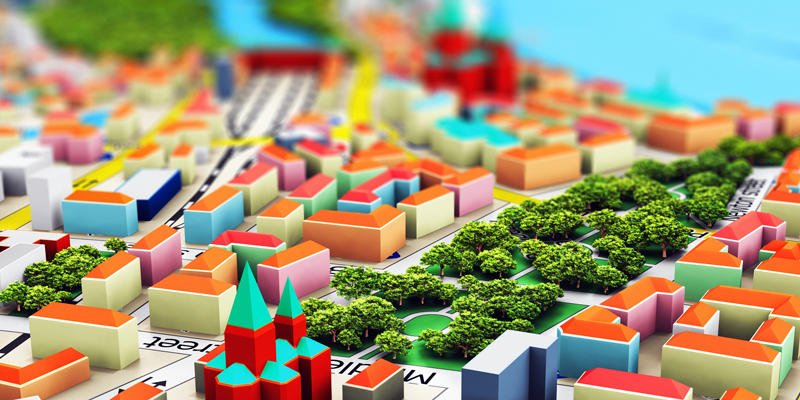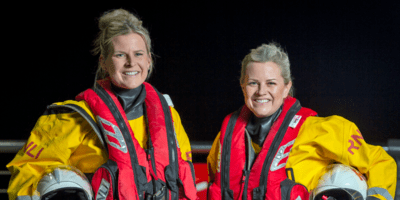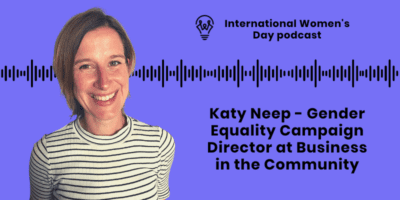Sarah Shaw is head of planning at Glasgow City Council. She began by studying for a law degree at Trinity College Dublin before she studied for her MSc in Urban and Regional Planning at the University of Strathclyde. Sarah started out as an assistant planner at South Lakeland District Council before moving to Glasgow City Council, initially as senior planning officer, principal planning officer, business manager, eventually working her way up to her current head of planning role in 2021.
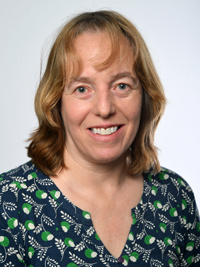
“I think the main thing to remember is that any good design for women is good design for everybody. It’s universal design. It’s not just for women. It’s just making sure that women’s lived experience is being taken into account.”
Passionate about planning
My career route planning was slightly unusual in that I did my first degree in law at Trinity College Dublin and at the end of that, I decided I didn’t want to be a lawyer, but I was interested in the legal process, but also in the environment and design. So, it was actually through the career guidance of a national newspaper that suggested either landscape architecture or town planning that I looked into town planning and found a course in Scotland.
I was born in Glasgow, so I thought it would be fun to go back and do the course in Glasgow. I did a two-year master’s degree at the University of Strathclyde. After that, I got my first job in the Lake District, as a trainee planner. Once I became a Chartered Planner, I got a job at Glasgow City Council and I’ve been there ever since.
I started back in the 90s, and I’ve been in Glasgow and done a variety of different types of planning jobs in the city from planning policy and then more latterly in what we call development management, which is dealing with planning applications and does have more of a legal input.
About Glasgow
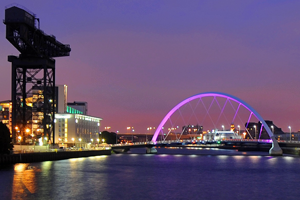
It’s quite a bit bigger than Edinburgh, which is the capital city of Scotland and it serves as a national and regional centre for shopping, work and for cultural activities.
Planning ahead
Planning is part of a really big department in Glasgow City Council, which includes housing building standards, consultancy services, asset management, roads, environmental health and more.
We work quite collaboratively with other departments, so for example, with housing, we’re looking at extensive work about affordable housing and the completion of different types of housing trends across the city. I deal with the oversight of a lot of that.
I also manage quite a big team — so we’ve got 107 people in planning service and that covers both people dealing with policy, with projects on the ground, assessing planning applications, which takes up quite a bit of our time as well. So, we’ve got three main areas of work and various structures underneath me with the group managers and planning team managers.
We’ve got a variety of support staff as well and we’ve also got specialist advice, such as heritage officers, design officers and a landscape officer. (There are quite a few Charles Rennie Mackintosh buildings in Glasgow and around the area too, as well as significant buildings of cultural heritage)
Glasgow as a ‘feminist’ city
In October last year, one of the councillors submitted a motion to the full council that Glasgow would become a feminist city in terms of town planning.
They also wanted to look at the aggregation of data and representation of women in the governance of the Council and the built environment professions. This was the start of a journey. It’s putting a marker up there. I don’t think at the time any of us necessarily realised it was the first city in the UK. That’s a term that’s been added since it hit the press. It’s interesting. I would’ve thought other cities would’ve probably done similar things, but certainly at the moment, that seems to be the label that that’s been put on about it, so we’re just developing that a bit further to see what it actually means in practice.
Feminist urbanism in practice
The term feminist planning is quite controversial and we’ve had some pushback from people. Both male and female colleagues have said: “Well, why is that? Why would we be looking at feminist planning particularly?” But for me, I think it’s looking at gender mainstreaming, the other phrase it used quite a lot and it’s looking at the built and natural environment in the city through a gender lens.
It’s making sure that the areas that we design, both in terms of the layout of housing areas and public realm, and the city centre and public transport, parks and so forth are all designed in a way that makes sure that it’s looked at women’s safety.
So, things like access routes across parks. Are they properly lit? Are they designed so that they don’t go through areas that lack surveillance or with areas of shrubbery round about them that people could hide behind, all that sort of thing.
It’s also ensuring that the city streets have the right kind of uses, that they’ve got proper overlooking, but it’s also in terms of things like transport routes and access to facilities.
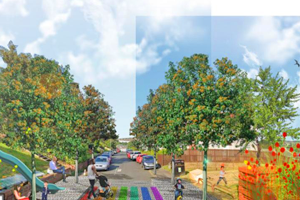
I think the main thing to remember is that any good design for women is good design for everybody. It’s universal design. It’s not just for women. It’s just making sure that women’s lived experience is being taken into account. If it works for women, it works for everybody.
You can say the same with children, if something works for children or with accessibility for disabled people. If it works for them, it works for everybody. So, it’s really just one of the many lenses that we have to use.
International Women’s Day: A day to reflect
On International Women’s Day in particular it’s important to recognise where women are involved in the different areas of work, and different aspects of the world. It’s a wonderful chance to look around and see what else other people are doing. We all tend to have our heads down and we focus on our own world but it’s quite enlightening to just look around every once in a while. International Women’s Day is a great day for self-reflection.
In Glasgow, we’re doing an international seminar with the World Town Planning Institute on feminist urbanism. We’ll be doing a webinar about that, partly because March is Women’s History Month too. (It’s interesting too from a historical perspective that many housing associations are community-based and a lot of women got involved as they wanted to drive social change.)
My first awareness of the whole feminist planning label was when Vienna City Council worked on a development back in the 1990s where they deliberately put a whole team of women — women architects and planners — on the project that was developing a new residential neighbourhood.
It was a very deliberate way of making sure that the people who were working on the schemes were also female. They weren’t just involved in the concept, but they were the people who were actually carrying it out. There’s an element of feminist planning around it that the motion in Glasgow picked up on in relation to the representation of women in the built environment profession.
This includes female architects and engineers, and so forth. We’re trying to push for a reasonable gender balance because if you look around, certainly the construction industry and engineers and possibly architects are still predominantly male, so when something’s being implemented and designed it is more likely to also include the female point of view.
The next big adventure awaits
One of the big challenges that we’re all working on is the new National Planning Framework in Scotland and I’m intrigued to see how it’s going to work out. It’s affecting all the different planning authorities in Scotland but it’s a big challenge for us working out how that new planning, guidance, and planning policy is going to work out in practice for all the different authorities.
I’m not sure if I’d say I’m actively looking forward to it but we’re anticipating and working around it at the moment, so that’s the next big adventure for us.
I think one of the things about the feminist planning work is that it did land without too much warning, but it was an area that I was interested and I had been doing a bit of research for already, so that is something that’s going to be intriguing to take forward and see how much it might change the way we look at things.

